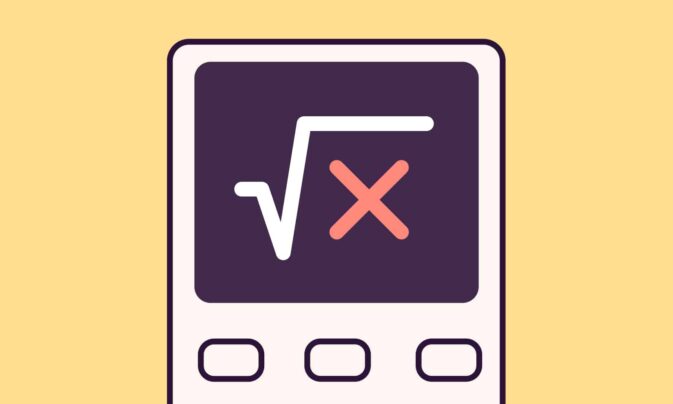Whether we like it or not, we all have a natural unconscious bias that hampers our ability to assess candidates fairly. And that’s where blind hiring can help.
Blind hiring is rising in popularity as businesses look to improve fairness and equality in their hiring process and to make statistics like this one: “Caucasian-sounding names receive 50% more callbacks than minority-sounding ones,” a thing of the past.
In this article, we will explore all things blind hiring process, including what it is, why it’s important for equal hiring, and the pros and cons.
Then, we’ll show you how to introduce blind hiring techniques into your recruitment process, making it more fair, transparent, and equal for everyone.
Let’s get into it!
TL;DR – Key takeaways
- Blind hiring is the process of eliminating job seekers’ personal information, such as age, race, or sex, from the application.
- This helps to remove hiring bias from the hiring process, resulting in more diverse candidates progressing further in the recruitment pipeline.
- Organizations that implement a blind hiring process will benefit from an increase in diverse candidates, a more-robust work culture, and an increased reputation.
- There are several downsides to integrating blind hiring into your recruitment strategy, namely a lack of context on a candidate’s application. It’s a tough process, and it can lead to a company culture clash.
- Use Toggl Hire’s Test Library and applicant tracking system to implement blind hiring. You can easily set up quizzes to evaluate candidates and narrow down top talent.
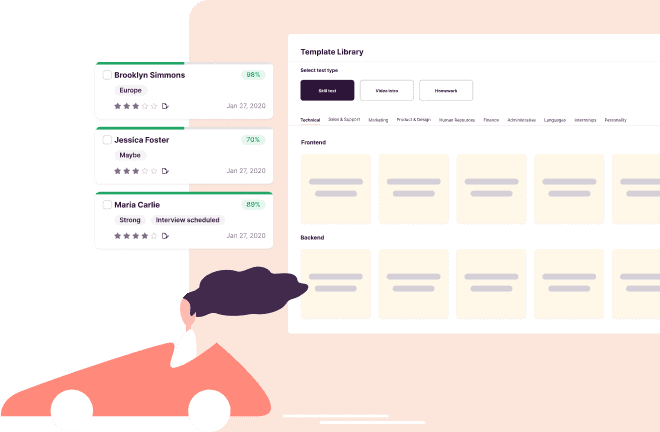
What is Blind Hiring or Blind Recruiting?
Blind hiring is a technique recruiters use to remove bias from the hiring process. Specifically, it removes identifiable characteristics such as name, gender, religion, age, and education from a candidate’s profile so that hiring decisions are made solely on capability, skills, experience, and fit.
Blind hiring techniques can be applied across the entire hiring process, from the initial application to the final interview. While we’ll look at some more statistics later, blind hiring has been proven to improve workplace gender diversity and, for many organizations, general recruitment success.
For example, Deloitte implemented school and university-blind recruitment, ex-British Prime Minister David Cameron announced that the UK’s university admissions service would carry out “name-blind” applications in 2017, and law firm Clifford Chance adopted a “CV blind” policy.
When you take away the opportunity for bias, many organizations actually find that they recruit better candidates with better skill sets for their vacancies.
What is Blind Interviewing?
A blind interview is when the candidate’s identity is obscured or hidden from the hiring team during the interview. This is done on purpose, as blind hiring helps to remove any unconscious bias from the recruitment hiring process.
In practice, blind interviewing can require some out-of-the-box thinking when it comes to candidate sourcing—for example, using specialized software to obscure the candidate’s identity, skill-based questionnaires, and interview chatbots.
What is blind resume screening?
Blind resume screening is an effective tool used to prevent biased hiring decisions by removing personal information from a CV, such as age, gender, place of qualification, and more.
This approach to recruitment eliminates the potential for unconscious bias in the pre-screening process, ensuring that decisions are based solely on job-related skills.
Toggl Hire takes this concept a step further by utilizing a skills-based quiz to pre-screen applicants to create an equitable hiring process. Instead of relying on subjective demographic information, the process becomes automated and shortlists candidates based on job-related skills.
Obviously, we have our own biases when it comes to software that helps to reduce bias. However, some other examples include Manatal for diverse screening, ClearCo to track diversity metrics, Greenhouse for anonymous assignments, and Mogul to find diverse talent around the world.
Why is Blind Hiring Important In The Modern Workplace? + Stats
Blind hiring has become especially important in the modern, diverse workplace. But why? Fundamentally, it all boils down to improving workplace diversity and reducing bias.
In 2023, we know that we should be hiring candidates based on their abilities while aiming to recruit the best person for the role – no matter who they are, their sexual orientation, or where they come from.
But in reality, there are still some blockers that hold us back. Let’s look at three reasons why blind recruitment is so important:
1. Diverse hiring strategies require effort
41% of managers say they’re too busy to implement diverse hiring methods.
But the thing is, blind hiring isn’t hard to implement, especially at the early stages of the hiring process.
Simply by asking candidates to remove personal characteristics from their applications, companies are already well on the way to leveling the playing field across their organizations.
2. We all have biases, whether we like it or not
1 in 5 women experience recruitment discrimination vs. only 1 in 20 men.
Unconscious bias isn’t something to be ashamed of; it just needs to be recognized and prevented.
Blind hiring takes away the opportunity for our preconditioned unconscious biases to take over, leaving recruiters to only focus on candidates’ skills, knowledge, and experience, nothing else.
3. Diversity drives better performance
What’s the productivity upside of diversity? Racially diverse teams perform 35% better than their competitors.
The ROI of blind recruitment methods speaks for itself, allowing organizations to drive better business outcomes by hiring talent based solely on their skills, not their gender, age, race, or religion.
What are the downsides of blind hiring?
Like any hiring method, however, blind hiring isn’t perfect. Here are four drawbacks of the blind recruitment process to consider:
1. A lack of context
Blind hiring eliminates valuable context from a candidate’s profile which, in certain circumstances, can actually damage their application.
For example, without the context of maternity leave, a two-year career break may be a red flag for some recruiters.
2. Blind hiring is tough
Pure blind hiring is tough to achieve. There are cues everywhere that give us an insight into someone’s personal characteristics even without them being explicitly shared.
Recruiters and hiring managers need to be educated on this and work to remain impartial even when information may be at risk of being revealed.
3. De-personalized applications
Blind hiring does run the risk of de-personalizing the hiring process.
While it’s essential to remove bias and promote diversity, it can stop candidates’ personalities from shining through. This is particularly important in relationship-heavy roles such as Sales or Customer Service.
4. Company culture clash
In addition, these blind hiring processes can impact the chance of candidates fitting the company culture since their backgrounds and experiences are overlooked.
And without understanding the person face-to-face, it can lead to team integration issues down the line.
What are the benefits of a blind hiring process?
That said, most will agree that the pros of blind hiring practices, especially in the early pre-screen stages, outweigh or overcome a lot of the cons.
Let’s take a look at some more of the benefits:
1. Reducing unconscious bias
Unconscious bias is discussed often, as it should be. To reduce its implications on hiring decisions, blind hiring is used to remove personal information from job applications, creating a more diverse candidate pool and allowing the hiring manager to focus on the candidates’ resumes.
2. Improving the diversity
Blind hiring can promote diversity in the workplace by eliminating biases and leveling the playing field for underrepresented individuals competing for positions, resulting in a more equitable and diversified staff.
3. Increasing objectivity
By removing personal data from job applications, hiring managers can be more impartial and focus solely on applicants’ abilities, qualifications, and work experience rather than allowing subjective biases to come into play.
4. Improving the candidate experience
Blind hiring can increase the attractiveness of an organization to potential candidates by eliminating the worry of bias when applying. This can lead to a greater perception of the company and a stronger employer brand.
Hiring teams and HR professionals can further improve the interview process by using gender-neutral language during the interview stage.
5. Enhancing the organization’s reputation
Blind hiring practices can boost an organization’s reputation as an equitable, inclusive employer, leading to a more talented and diverse applicant and talent pool itself.
6. Promoting a more diverse workforce culture
Practices like blind hiring can create a more equitable workplace that boosts productivity and workforce diversity and stimulates innovation.
| Pros | Cons |
|---|---|
| It removes bias from the recruitment process. | It can remove crucial context from a candidate’s application. E.g., a career gap may seem strange without the context of maternity leave. |
| It helps organizations hire the best candidates based solely on their skills, knowledge, and experience. | Pure blind hiring is hard to achieve. There are cues everywhere that identify people’s characteristics. |
| It promotes a more diverse workforce culture, proven to increase productivity. | It can become de-personalized, especially impacting roles that rely on relationship building. |
How to Do Blind Hiring – From Screening to Interview Tools
Hopefully, you’re now sold on the value of blind hiring and the benefits of removing bias to create a more diverse workforce.
If so, let’s look at 4 different ways you can introduce blind hiring into your recruitment process.
#1 – Neutral Job Descriptions – Textio
Without knowing it, your job descriptions could be turning candidates off. Subconsciously, certain groups react negatively to particular words or phrases which other candidates wouldn’t think twice about.
Many recruiters don’t even know they’re doing it, with research showing that 70% of cross-sector job ads inadvertently contain masculine-themed language. If you want to boost your applicant rate, focus on leveling the playing field by making your own job postings and ads appealing to a broader audience.
Tools such as Textio are perfect for this, using a Grammarly-style text editor to provide suggestions on ways to neutralize your job ads. Textio also focuses on aligning to your brand’s tone of voice, so you won’t lose your own identity in the process.
Simply re-framing your language can help you get your blind hiring strategy off to a great start.
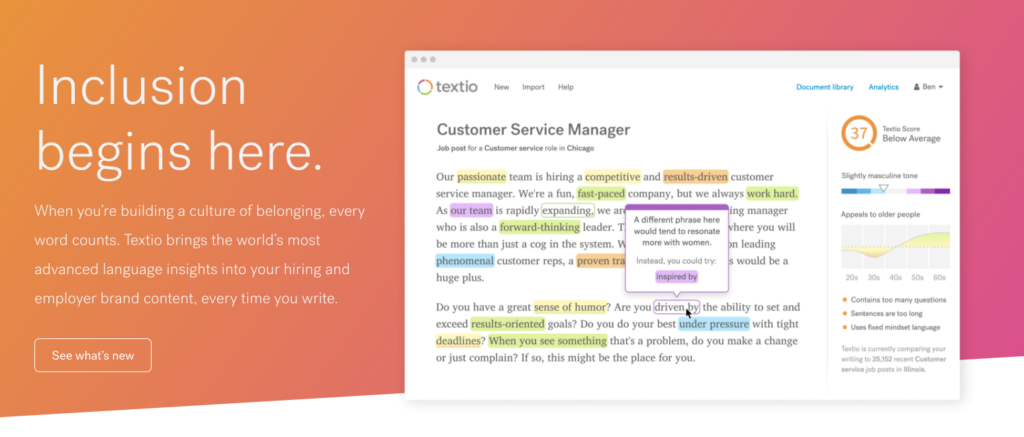
#2 – Anonymize Your Application Process – Teamtailor
Once candidates find your job ads, the next step is to make their application as blind as possible. To do this, you’ve got two choices:
- Don’t ask candidates to submit personal information such as age, gender, race, religion, or education as part of their application.
- Or, if you do, find a way to remove/anonymize it for your recruiters and hiring managers.
Tools such as Teamtailor are great at this, allowing candidates to enter the recruitment funnel anonymously. Simply turn on anonymous mode for the chosen stages of your ATS process, and personal information will be hidden.
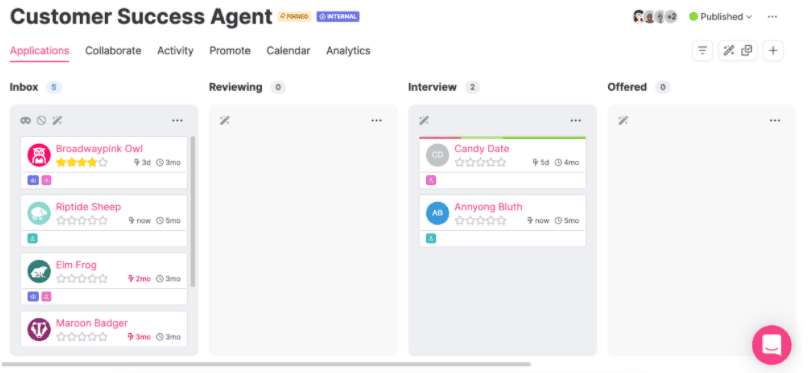
#3 – Skills Testing over Resumes – Toggl Hire
The best way to be genuinely ‘blind hiring’ is to focus on real, in-the-moment performance rather than second-hand experience.
Skills testing eliminates any unconscious bias from the start of the recruitment process, using job-related performance as the first-pass filter.
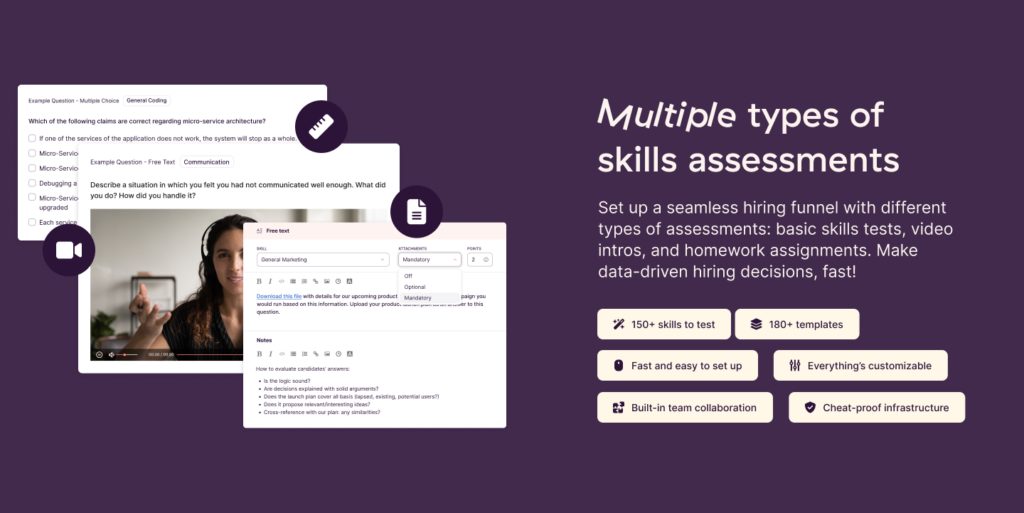
With tools like Toggl Hire, candidates can take a short 5-10 minutes skills-based quiz, showing their practical knowledge and aptitude for the role they’re applying for.
This removes the focus from personal characteristics such as age, gender, race, or education, focusing purely on whether or not they’ve got the right stuff to do the job!
You can find out more about how we do it by watching this 1-minute explainer video below.
#4 – Run Anonymous Interviews – Interviewing.io
Of all the stages to ensure blindness, interviews are definitely the hardest. Directly interacting with candidates while not revealing any personal characteristics is a real challenge, especially if you’re assessing soft skills, such as communication.
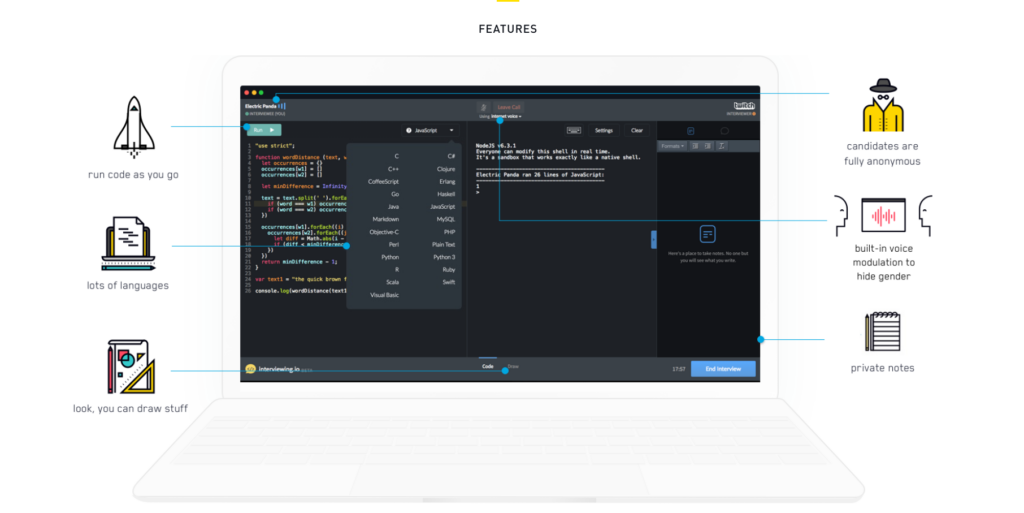
Tools such as Interviewing.io do a great job of creating an anonymous interviewing environment where candidates showcase their skills without revealing personal information. While it focuses on software development, features such as voice modulation and anonymous interview scheduling help recruiters stay impartial and focused on performance.
Time to embrace a blind hiring process?
With the lack of diversity and unconscious bias still plaguing the recruitment industry, many organizations are turning to blind hiring techniques.
Removing personal characteristics doesn’t just make things fairer; it helps recruiters focus on candidate performance, meaning you’ll make better hires every time.
If you’re just starting on your blind hiring journey, there are a range of tools out there to help.
We’d recommend ditching resumes and applications for skills tests. Not only does this keep your recruitment process anonymous, but it also focuses your energy on candidates who can actually do the job, not just the ones who say they can!
James Elliott is an APMQ and MSP-certified project professional and writer from London. James has 8 years' experience leading projects and programs for tech, travel, digital, and financial services organizations, managing budgets in excess of £5m and teams of 30+. James writes on various business and project management topics, with a focus on content that empowers readers to learn, take action, and improve their ways of working. You can check out James’ work on his website or by connecting on LinkedIn.


